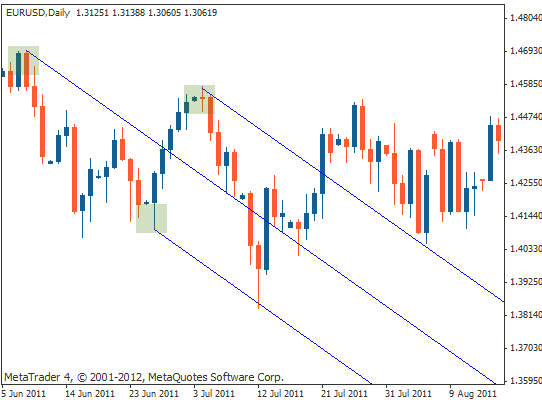Andrews Pitchfork

Andrews Pitchfork: Your Unique Tool to Draw Trading Channels
In the exciting world of financial markets, finding effective tools to analyze price trends is essential for successful trading. Andrews Pitchfork, a powerful yet simple technical indicator, offers a unique way to draw trading channels and make better trading decisions. Let’s explore what Andrews Pitchfork is, delve into its historical background, examine its advantages and disadvantages, and learn how and when to use it for buying and selling like a pro.
What is Andrews Pitchfork?
Andrews Pitchfork, also known as Median Line Analysis, is a technical indicator used to identify potential support and resistance levels in a trending market. It consists of three parallel lines drawn from significant price points on a chart to create a pitchfork-like formation. Developed by Dr. Alan Andrews, an esteemed educator and technical analyst, in the early 20th century, this tool has stood the test of time and remains popular among traders.
How Andrews Pitchfork Works:
Drawing an Andrews Pitchfork involves three simple steps:
- Selecting Anchor Points: Identify three significant points on the chart – usually a high, a low, and another high (or vice versa). These points will be used as anchors for drawing the three parallel lines.
- Drawing the Pitchfork: Once the anchor points are chosen, draw the first line (the pitchfork’s handle) connecting the first and second anchor points. Then, draw the other two lines (the pitchfork’s tines) parallel to the handle, starting from the second anchor point and extending to the third anchor point.
- Finding Support and Resistance: The Andrews Pitchfork provides potential support and resistance levels. Traders look for price reactions around these lines to identify trading opportunities.
Pros of Using Andrews Pitchfork:
- Objective Price Channels: Andrews Pitchfork provides traders with objective price channels, making it easier to visualize potential support and resistance levels.
- Adaptable to Market Conditions: This tool works well in both trending and sideways markets, helping traders identify price channels regardless of the market phase.
- Visual Simplicity: The visual representation of the Andrews Pitchfork is easy to understand, making it accessible to traders of all experience levels.
- Confluence with Other Indicators: When combined with other technical indicators or chart patterns, the Andrews Pitchfork can enhance the overall analysis and confirm potential trading opportunities.
Cons of Using Andrews Pitchfork:
- Subjective Anchor Points: The selection of anchor points can vary among traders, potentially leading to different interpretations and results.
- Limited Trend Identification: While Andrews Pitchfork is great for identifying support and resistance levels, it does not explicitly indicate the trend’s direction or strength.
- Sensitivity to Data Points: Small changes in anchor point selection can result in significantly different pitchfork formations, impacting the accuracy of predictions.
When to Buy and Sell using Andrews Pitchfork:
Andrews Pitchfork can be used to identify potential buy and sell points in the following ways:
1. Buy Signals: Traders may consider buying when the price approaches the lower pitchfork line (support) within an uptrend. This indicates a potential bounce in price, providing a buying opportunity.
2. Sell Signals: In a downtrend, selling opportunities can be sought when the price nears the upper pitchfork line (resistance). If the price shows signs of reversing or stalling around this level, it may indicate a selling opportunity.
3. Trend Confirmation: Combining Andrews Pitchfork with other trend-following indicators, such as moving averages or trendlines, can help confirm the direction of the trend and increase the accuracy of buy and sell signals.
4. Risk Management: As with any trading strategy, risk management is crucial. Implementing appropriate stop-loss levels and position sizing is essential to protect against adverse market movements.
Conclusion:
Andrews Pitchfork is a valuable tool that provides traders with a unique way to draw price channels and identify potential support and resistance levels. While it has its limitations and requires careful selection of anchor points, the simplicity and adaptability of Andrews Pitchfork make it a compelling choice for traders seeking to improve their market analysis.
By using Andrews Pitchfork in conjunction with other technical indicators and risk management strategies, traders can gain a deeper understanding of market trends and make more informed buying and selling decisions. Remember, successful trading requires a combination of analysis, discipline, and experience. With Andrews Pitchfork as your guiding tool, you’ll be better equipped to navigate the financial markets and uncover rewarding trading opportunities. Happy trading!